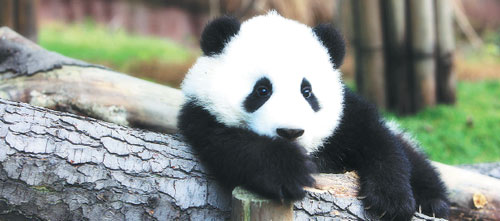City's fortunes inextricably linked to those of giant pandas
 |
|
A giant panda lounges on a tree truck at the Chengdu Research Base of Giant Panda Breeding. |
Chengdu, already a top draw card for visitors from around the world with its giant pandas, expects even more tourists to flood in as panda and other tourism facilities continue to be upgraded.
Zhang Zhihe, director of the Chengdu Research Base of Giant Panda Breeding, said the base will become the world’s top giant panda tourism destination.
“Chengdu is home to giant pandas, enabling it to develop related tourism and culture while protecting the animal,” he said.
The base boasts the most advanced technologies in the world for the breeding and protection of giant pandas.
At the end of last year the base had 176 giant pandas and received 3.5 million visitors. Mr Zhang said the base was designed and built to serve as a scientific research and breeding institution, but the original plan no longer satisfies the needs of an increasing number of visitors.
The base will be enlarged from the current 163 acres to 494 acres, incorporating more research centres, disease prevention and control centres and gene banks for rare and endangered wild animals.
The facilities will also house national key laboratories and biotechnology centres for giant panda protection and research, as well as an interactive museum about giant pandas.
Mr Zhang also hopes to establish an internationally advanced research team on biodiversity protection.
Outside the panda base, Mr Zhang expects to build an urban leisure resort and cultural creative industrial zone to promote sightseeing, ecological tourism, health preservation, film and television production and panda-themed hotels.
Mr Zhang said the Dujiangyan Field Research Centre, a branch of the research base in the city’s northwest that trains pandas to live in the wild, should be enlarged to 1,977 acres in the first phase and 3,954 acres in the next phase.
The field research centre will be upgraded into a comprehensive base that combines panda wild-release training, rare animals and plant breeding and observation, as well as ecological tourism, he said.
















